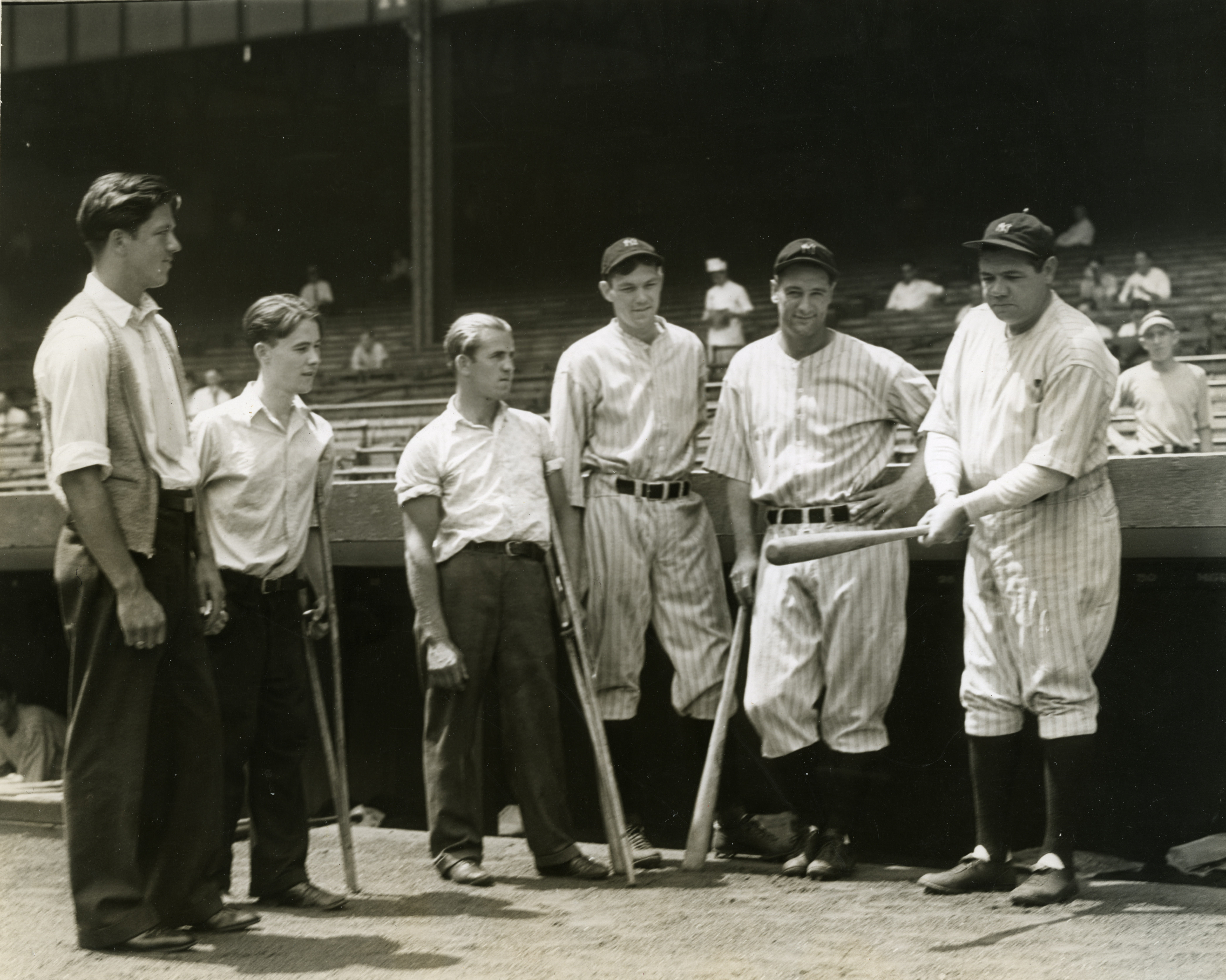Background on International Center for the Disabled

Babe Ruth, Lou Gehrig, and the New York Yankees with visitors from ICD, ca.1925
Rehabilitation became a watchword of Progressive reformers at the turn of the twentieth century, signifying a new approach to ameliorating the "problems" of physical disability through a new form of institutional care. In the quarter century between 1890 and 1915, dozens of what Brad Byrom calls "hospital-schools" were founded to provide an admixture of medical care and vocational training for disabled children, preparing them to become "full participants" in society. Rehabilitational training for adults took somewhat longer to root, becoming widespread only under the exigencies of the First World War and the need to care for large numbers of wounded and disabled veterans.
Leading the way in the United States, the American Red Cross founded the Institute for Crippled and Disabled Men (ICD) during the spring 1917, announcing itself as the "first specialized trade school in the country for the handicapped adult" (McMurtrie, The wounded soldier). Initial funding for the Institute was provided by a $50,000 donation from Jeremiah Milbank (1887-1972), whose experiences doing Red Cross relief work brought his attention to the issues of disability. An investor and scion of a family that had made its fortune in condensed milk with the Borden Milk Company, Milbank had the financial wherewithal to assist and the philanthropic sensibility to match. He soon became principal benefactor for the Institute, and his philanthropy grew into an unstinting, lifelong commitment to support for disability research and services that included founding the JM Foundation in 1924 and the International Committee for the Study of Infantile Paralysis (polio) in 1928.
The ICD followed Milbank in adopting a three-fold mission: assisting persons with disabilities in becoming self-supporting, preventing dependence on public charity, and promoting public understanding of disability. Known as the "American method," the approach they took emphasized workplace adaptation rather than training people for specific jobs, and the ICD soon incorporated a "sheltered workshop" onsite in which homebound workers worked for nonprofit enterprises in a segregated space designed to prepare them for "regular employment" -- one of the best-known enterprises in the early years of the ICD was a workshop for the production of prosthetics, braces, and other devices.
As the number of veterans needing rehabilitation services declined, the ICD evolved. Becoming independent of the Red Cross in 1920, they extended their programs to accommodate children as well as adults and opened their classes to persons in need regardless of their financial resources. Once admitted, clients advanced through training at their own pace, taking classes in fields ranging from optical mechanics to typewriter and sewing machine repair, oxy-acetylene welding, jewelry making, linotype printing, and drafting, all with the goal of preparing for permanent, gainful employment. When ready to strike out on their own, clients were presented with a certificate on graduation day, a ceremony that quickly became one of the major ceremonial events of the ICD year. The Institute also hosted a number of special social and fundraising events, most famously including a river cruise, but also baseball games and sporting events, a carnival, and a raft of holiday parties.
In 1931, Milbank funded the construction of a new building for the Institute at 23rd Street and 1st Avenue to serve as its permanent home. The building included rooms for vocational classes, recreational spaces, an employment bureau, and dormitory facilities for clients from out of town. With the renewed need to care for veterans during the Second World War, the Institute served as a site for training Air Force and Veterans Administration personnel, as well as representatives from civilian organizations, and thereafter they increased their profile in research relating to disability. In 1952, the ICD struck a formal agreement of affiliation with both Columbia University and Presbyterian Hospital with the intent of merging their strengths in vocational training and job placement with the hospitals' strengths in medical care and social adjustment. Six years later, they affiliated with the Institute of Physical Medicine and Rehabilitation at New York University's Bellevue Medical Center, working toward what NYU President Carroll V. Newsom called the ideal of "total rehabilitation" (Lissner, 1958). They offered an impressive array of medical services, from internal medicine to pediatrics, psychological counseling, and care for speech and language disabilities.
The Institute has changed its name twice, though not yet its acronym. In June 1981, they became the International Center for the Disabled, and under that name they played an important role in promoting passage of the Americans with Disabilities Act in 1990. In 2013, ICD became the Institute for Career Development and sharpened focus on its "original and core mission of guiding people with barriers to employment to gain skills, enter the workforce and live happy, productive lives." Currently, they serve the needs of people with disabilities, individuals with Aspergers syndrome, veterans, career changers, and youth in transition.

